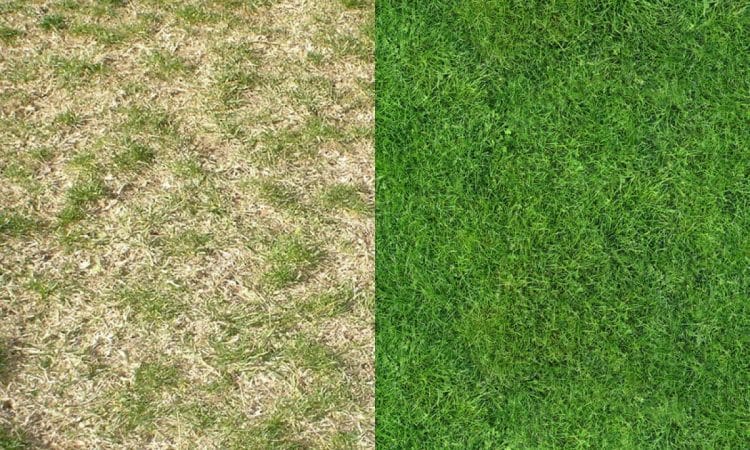
How to Revive a Burnt Lawn: Effective Tips for a Lush Garden
Excessive heat or mistakes in watering and mowing can lead to a burnt lawn. Here’s how you can save your lawn with these tricks.
A burnt lawn looks unkempt, can damage grass roots, and continuously dries out the soil. With these tips, you can prevent brown spots and burnt lawns, avoiding such problems altogether.
Possible Causes
A burnt lawn can result from various causes. It occurs not only when the sun’s rays are too strong for a long time but also when the lawn is watered incorrectly, the blades are kept too short, or fertilized improperly.
First Aid Measures
If your lawn is burnt, you can still save it with these four steps:
- Fertilize According to Instructions: Follow the manufacturer’s instructions for fertilizing your lawn. Pay attention to the dosage instructions and use lawn fertilizer suitable for your soil type. A soil analysis can help you make the right choice. You can also seek advice from your local garden center or DIY store. The staff often know the condition of the soil. The best time to fertilize is in the evening when the sun is not as intense on the lawn.
- Water Generously: After fertilizing, give your lawn plenty of water. More is better than too little: the fertilizer will seep away with the water, and the grass can absorb the much-needed moisture.
- Give It a Break: Allow your lawn some rest and avoid overburdening it.
- Water Every Evening: Water your lawn sufficiently every evening. On cloudy or rainy days, watering every other day is sufficient.
After 1.5 weeks, the regrowth of healthy grass should be noticeable.
If new grass blades do not grow back after this treatment, you need to scarify the lawn and then reseed new grass in the burnt areas.
Further Help for a Healthy Lawn
A burnt lawn can also result from mowing at the wrong time. During the summer months, use the evening hours for mowing to give the cuts on the grass blades time to heal overnight. Additionally, the plant is not focused on photosynthesis and can direct its energy towards regeneration.
Watering is also an essential part of lawn care. It is best to give the grass a good portion of water in the morning or evening. Avoid midday hours with intense sunlight: the magnifying glass effect caused by the sunlit water droplets can cause plants to die from the heat.
If these measures do not help and a new lawn has not formed after a month, you should replant the lawn and choose more robust varieties. You can find suitable varieties for your needs in this overview.
Extra Care
After the first aid measures, the lawn needs extra care. This means applying fall fertilizer if the time of year allows it. Two weeks later, you should scarify the lawn. This removes dead plant parts, prevents weeds, and ensures that the lawn and roots can breathe again. It also prevents the formation of lawn felt.
Large gaps that arise after scarifying can be filled by overseeding the lawn. Overseeding should be done as early as possible in the fall so that germination is complete before the start of winter and the young lawn grasses can survive the frost period.
Why You Don’t Need to Completely Remove Burnt Sod
The sod sold in this country is relatively robust. It may happen that the blades turn brown or dry out due to the heat in the summer or the intense sunlight throughout the year. However, the roots usually remain intact, even if the soil is very dry. This means that they will sprout again as soon as they receive enough moisture to grow again. It is essential that the moisture level remains consistent for a while, allowing the roots to draw new strength and energy for the next challenging and stressful phase (drought, pests, frost). Then water sufficiently, but not too much. Excessive water can damage the blades and later even the roots.
Preventing Burnt Lawns
First, pay attention to the type of grass in your garden. A distinction is made between so-called sun and shade grasses. The first group is a variety that wants and can convert long periods of sunlight. Through photosynthesis, these leaves can utilize light and heat. If the long periods of sunlight are permanently absent, brown spots usually form.
The opposite is true for shade leaves. These are sensitive to sunlight and dry out quickly as a result. As a tool, it is advisable to adapt the appropriate varieties to the conditions in your garden: Trees often cast large shadows, in which case the use of shade leaves is recommended. If certain areas have changing conditions, you can mix the seeds before sowing.
Although the lawn needs nutrients, too much or too little fertilization can also cause the lawn to burn.

